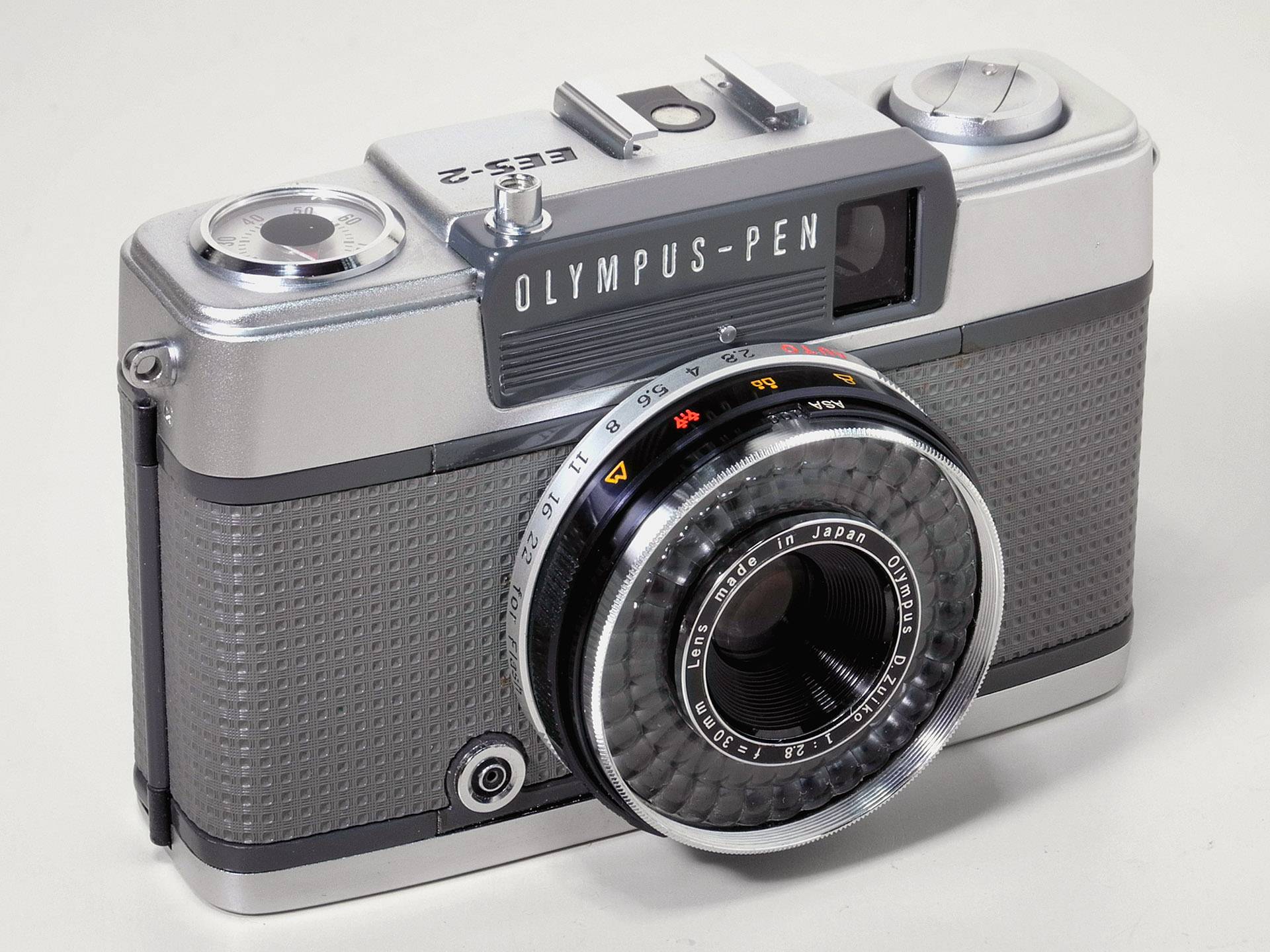Olympus Pen EES-2: A Camera Lost in the Shadow of Greatness
12 22 Share TweetThe Olympus Pen EES-2 is the predecessor of the Olympus Trip 35. It is almost identical to the Trip 35, but it is a half-frame camera, which doomed it to fall out of favor with enthusiasts.

I had been looking for an Olympus Pen EES-2 for a long time. I finally found one at a good price and it looked clean. When it arrived, I was disappointed because I found that it was suffering from the dreaded “No-Red-Flag” syndrom. I looked online for instruction on repairing this camera and I found a few resources. I decided to disassemble the lens just enough to apply naphtha to the shutter leafs to work them free. It worked! I also had to lubricate several of the plates to which the capture needle and the red flag are attached. In the end, I got it working, and I’m very happy with this camera. If you decide to buy this camera, but you don’t want to deal with repairing it make sure to ask if the red flag show up in low light. This camera requires no batteries, so this is a very easy thing for the seller to test.
Background
The Pen EES-2 is a half-frame camera. Many people don’t know that it is the predecessor to the more well-known Olympus Trip 35. The Pen EES-2 was released before the Trip 35. It uses exactly the same autoexposure system and a very similar lens.. Both cameras use a very clever “trap-needle” autoexposure system that automatically chooses between shutter speeds of 1/200” or 1/40” and apertures of 2.8 to 22. You can adjust the selenium meter for film speeds from 25 to 400 ASA which makes both cameras perfect for shooting redscaled film. Both cameras use around-the-lens metering which automatically compensates for filters. The Trip 35 has a 40mm lens which is one of my favorite focal lengths. This makes it a slightly wide-angle camera, but just barely. The Pen EES-2 has a 30mm lens, but being a half-frame camera it works like a 43mm lens on a full-frame camera which gives it an exactly “normal” perspective, so it actually has a slightly narrower angle-of-view than the Trip 35 even though it has a shorter focal length lens. The Trip 35 exposes a standard 24mm x 36mm frame on the film which produces a picture with a 2:3 aspect ratio. The Pen EES-2 exposes a 18mm x 24mm frame on the film which gives you a 3:4 aspect ratio. This is a very interesting ratio for a few reasons. First, it’s the original 35mm movie aspect ratio, so your pictures have a classic cinematic appearance. Second, it’s the same aspect ratio of new digital 4/3 cameras and cameras with a APS-C sensor. In fact, most APS-C sensors are the size of a classic half-frame.
Both cameras use four-position zone-focusing, but you have to be just a bit more careful with focus on the Pen EES-2 because of the slightly higher magnification. You will notice is your focus is off. Both cameras have icons for “One Person”, “Two People”, “Three People”, and “Mountain”. Both cameras have a hot shoe as well as a PC connector for off-camera flash capabilities. Both cameras have tripod threads. Both cameras have eyelets on both sides to attach a strap. Both cameras use a thumbwheel to advance the film. Both use 43.5mm filters! This size is uncommon, so it’s a bit difficult to find, but not impossible. You can still find 43.5mm filters and you can also use step-down rings. Cokin makes a 43.5mm holder for their filters, so this isn’t really a problem. The interesting thing is that both the Trip 35 and the Pen EES-2 have threaded lenses and they’re the same size. Both cameras have a four-element f/2.8 Olympus D Zuiko coated lens. Many people consider the 40mm lens on the Trip 35 one of the greatest lenses ever designed. The 30mm lens on the Pen EES-2 is almost exactly the same design in a wider focal length to support the half-frame format.
Shooting with the Pen EES-2
Shooting with the Pen EES-2 is a joy. It’s almost exactly the same size as my LC-A+, but heavier. Still it’s lighter than the Trip 35. It has exactly the same sturdy construction as the Trip 35. It uses lots of metal. One very important thing to note when you’re shooting half-frame is that the default mode is portrait. Most of the time, you will want to shoot in landscape mode which means you will be holding the camera sideways. Fortunately, this isn’t a problem with the Pen EES-2. Some cameras are difficult to operate sideways because of the position of the shutter release button, or the thumbwheel, or some other reason, but this isn’t the case with the Pen EES-2. I ended up shooting most of my shots in landscape mode with no problems.
Zone focusing makes focusing quick and easy, as long as you remember to do it. Once you select your film speed, it’s just a matter of focusing and shooting. You would think that only two shutter speeds, 1/200” and 1/40”, would be very limiting, but in practice it works very well because the camera has a wide selection of apertures. The autoexposure system favors a fast shutter speed to reduce camera shake.
Because it’s a half-frame camera, the pictures will be “grainier” if you enlarge them to the same size as a full-frame shot. Still, the sharp lens and fine-grain films available today can alleviate this problem. To further reduce granularity, you can use a slow film – 100 ASA or slower.
Examples
Endless Panoramas
Endless panoramas are possible by holding down the rewind button while you advance the film partially to reset the shutter.
Multiple-Exposures
Multiple exposures are possible by holding down the rewind button while you advance to the next frame.
Close Focus
This is about as close as the Pen EES-2 can focus.

Other Shots
Here are some other shots.
written by gvelasco on 2012-05-04 #gear #people #review #olympus #half-frame #olympus-pen-ees-2 #pen-ees-2



















































12 Comments